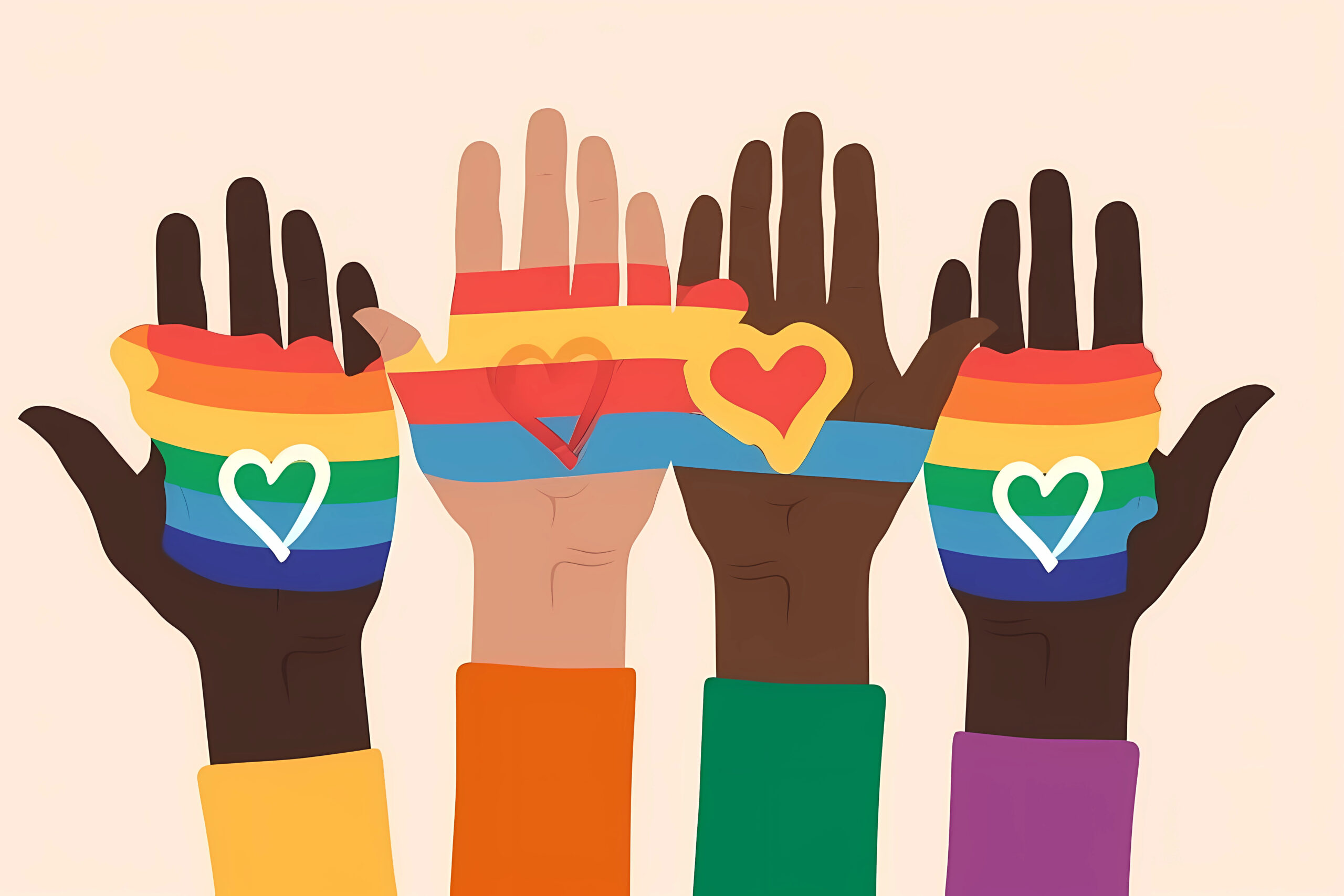Could you be biased without even realizing it?
We often assume that our conscious or rational mind is in the driver’s seat because it’s the part of our mind that talks to us, the voice inside our head as we read the words on this page. But science says our brains make decisions intuitively before we’re aware of it; that the vast majority of our processing takes place outside conscious notice. We all have learned stereotypes, attitudes, modes of thinking that are automatic, unintentional, and inbuilt, impacting our decision-making, and leading to flawed assessments — including hiring decisions. In other words, none of us is immune to unconscious bias.
In 2002, Daniel Kahneman changed the way we think about thinking, earning him a Nobel Prize. He put forth a simple cognitive split to explain much of human behavior: fast versus slow thinking. While an artificial construct, this dichotomy draws upon decades of research. Fast thinking is unconscious, instinctive, automatic, and emotional — resulting in snap judgments and, sometimes, bias. Slow thinking is what we consider real “thought;” it’s conscious, logical, deliberate, and (mostly) rational. We use both fast and slow thinking to process information and make decisions but tend to avoid slow thinking when possible because it is more work for our brain and consumes a great deal of energy. Most of the time, our fast and intuitive mind is in control, taking efficient charge of the thousands of decisions we make every day. Even the “simple” act of walking is best done without interference from consciousness — ask someone a multiplication problem mid-stride, and they are likely to stop for a second before answering. Our brains can consciously process 50 bits of information per second but can process a whopping 11 million bits unconsciously. Thought to be an evolutionary adaptation for humans to process and integrate multiple sources of information instantaneously, these cognitive shortcuts are, in essence, timesaving mechanisms for the human brain. But with shortcuts come shortcomings: when our fast-thinking, automatic mind makes decisions that should be the province of our slow-thinking, analytical mind, mistakes creep in.
If you’re making hiring decisions based on “gut feeling,” you’re likely hiring based on unconscious bias. Yikes.
Unconscious biases, though happening outside our awareness, can impact recruiting, hiring, diversity, and productivity. The vast majority of recruiters and hiring managers would not intentionally base their final hiring decision on an aspect like this, but that’s the problem with unconscious bias — you don’t realize that it is affecting your decision making. The best way to stop unconscious bias is through awareness and direct action in your recruiting, hiring, onboarding, and talent retention processes; this will help create a more genuinely diverse and inclusive workplace.
Here are 13 examples of unconscious bias that commonly impact both candidates and employers in the workplace — along with tips on how to avoid them.
1. NAME BIAS
Definition: Name bias refers to the tendency to judge and prefer people with certain types of names — often of Anglo origin.
Name bias in the workplace: What’s in a name? Apparently, a lot. The numbers bear out that this is of the most pervasive forms of unconscious bias in the hiring process. One research study found that white (Anglo-Saxon) names receive 50% more callbacks for interviews than do candidates with African-American names. Another study found that Asian last names are 28% less likely to receive a callback for an interview than those with Anglo last names.
Avoiding name bias: There’s a simple fix: omit candidate name and personal information like email, phone number, and address from application materials. Assign candidates a number, or have an unbiased third-party team member redact this information for the hiring team before a candidate interview, making skills and experience the main things being looked at, without the influence of irrelevant personal information.
2. HALO EFFECT
Definition: The halo effect, sometimes known as the “halo error,” is when one positive trait about a person affects how we judge them in other, unrelated areas.
Halo effect in the workplace: While looking at resumes, you see that a candidate graduated from an elite school and infer that they must be an excellent fit for your company. Other candidates may match your ideal candidate profile better, but they graduated from state schools. Without realizing it, you may find yourself favoring the elite school candidate, ignoring negative details that might emerge throughout the hiring process.
Avoiding the halo effect: To prevent the halo effect when hiring, make sure you do not see correlations where there are none. When reviewing candidates, hew closely to the details and attributes listed in your job profile so that you are less likely to be swayed by other.
3. HORNS EFFECT
Definition: The horns effect is essentially the opposite of the halo effect. It is when a negative trait about a person affects how we judge them in other, unrelated areas. Perception is unduly influenced by this negative trait — casting a mantle of “horns” instead of the vaunted “halo.”
Horns effect in the workplace: The horns effect can lead a hiring team to nix candidates based on a singular trait that is averse to the team’s preferences — despite its irrelevance to the role. It could be as inconsequential as the candidate displaying a particular quirk or mannerism during an interview or having worked in the past with a company you don’t like. Perception of the candidate can be altered entirely, even though these factors are irrelevant to the role.
Avoiding the horns effect: Have a negative feeling about a candidate? Try taking the time to figure out why. Where is that “gut feeling” coming from, what is prompting this reaction? By applying the slow thinking part of your mind, you may discover that the issue is trivial or insignificant and would not impact their ability to succeed in the role. Consult with the rest of the hiring team to get other perspectives on the candidate; checks and balances go a long way to extinguishing unconscious bias.
4. ANCHORING BIAS
Definition: Anchoring occurs when individuals use the first piece of information they learn about something to make subsequent judgments. Once this anchor is set, there is a bias toward interpreting other data around the anchor. In one study, students were given anchors that were clearly wrong—they were asked if Mahatma Gandhi was older or younger than age 9, or older or younger than 140. The two groups guessed in significantly different manners depending on which anchor they initially received, with the “9 group” choosing an average of 50 versus the “140 group” proffering an average age of 67.
Anchoring bias in the workplace: Common anchors that can impact hiring decisions include the college a candidate attended, where they live, the car they drive, or if the two of you grew up in the same town.
Avoiding anchoring bias: Analyze performance and retention data to uncover where there are strong correlations between hiring and future performance. Organize your hiring process to reflect this data and focus on attributes that are meaningful indicators of success for the role, like a strong aptitude for problem-solving.
5. GENDER BIAS
Definition: One of the most pervasive biases, gender bias is the tendency to prefer one gender over another. The gender pay gap and the variance in hiring rates are two of the most common (and glaring) examples of gender bias.
Gender bias in the workplace: It is no surprise that men are given preferential treatment over women in the workplace. But it may shock you to learn that both male and female managers were twice as likely to hire a man over a woman, according to a recent study published by the Proceedings of the National Academy of Sciences. When presented with equally skilled candidates, men were 1.5 times more likely to be hired — and when a lesser candidate was employed in lieu of a more qualified one, the lesser candidate was a man over 66% of the time.
Avoiding gender bias: A way to sidestep gender bias is to conduct blind screenings of applications that exclude aspects of a candidate that might reveal their gender — name, interests, volunteer organizations. Setting explicit diversity hiring goals can help ensure that your organization holds itself accountable to equitable hiring practices. Make skill and merit the yardstick rather than traits that can cloud judgment.
6. AFFINITY BIAS
Definition: We have all encountered this one before, both in and out of the workplace. Affinity bias, also known as similarity bias, is the tendency for people to connect with others who share similar backgrounds, interests, and experiences.
Affinity bias in the workplace: It’s easy to fall prey to affinity bias when evaluating “culture fit.” When hiring teams engage a candidate they like and feel will get along with the team, it’s often a bridge built of shared interests, experiences, and backgrounds. While similarities should not disqualify a candidate, they also should not be the deciding factor. At first glance, affinity bias may not seem like such an egregious issue, but at amplified levels, it can have serious implications for diversity in the workplace.
Avoiding affinity bias: Look to your company’s core values as the true north star when evaluating a candidate for culture fit. Make sure not to allow “culture fit” to become code for affinity bias. Focus less on shared experiences and more unique skills that will be a “culture add.”
7. CONFIRMATION BIAS
Definition: Confirmation bias is often dubbed the “mother of all misconceptions” because of its prevalence in our lives, and refers to the tendency to look for information that confirms our own pre-existing beliefs, prejudices, or desires. This selective observation may mean you overlook or reject information that does not fit your viewpoint, creating flawed patterns in our thinking that can lead to bias in hiring. It is one of the most studied unconscious biases.
Confirmation bias in the workplace: Confirmation bias can rear its head when a hiring manager looks for information to validate their belief of something, rather than looking at the data for its own merit. The hiring process can devolve into a way to confirm these beliefs as opposed to getting to know the candidate.
Avoiding confirmation bias: Create a list of standardized questions to gauge specific skills and traits of a candidate to help reduce confirmation bias. By having the hiring team evaluate candidates based on predetermined data points that relate directly to the role, candidates are on equal footing. Every interview will evolve into a unique conversation based on a person’s experience, but having a fixed set of questions will help prevent your team from asking too many off-the-cuff questions that could lead to confirmation bias.
8. ATTRIBUTION BIAS
Definition: Attribution bias is all about how we assess our own behavior: when we do something well, we credit our success to our skills and effort. But when we make mistakes, we blame it on externalities. Guess what happens when we assess the behavior of other people? We do the opposite: when we attribute their successes to “luck” — and see their errors as “red flags” or signs of weakness.
Attribution bias in the workplace: Attribution bias can skew your view of a candidate’s performance by minimizing accomplishments while amplifying faults or shortcomings — and may cause you to disregard a talented candidate. Humans snap to quick judgments and falsely assume things about people without knowing the full story. When hiring, attribution bias may cause hiring managers to find someone unfit for a role because of something unusual on their resume — like a gap of two years.
Avoiding attribution bias: There is an age-old adage about the dangers of assuming, and it holds here. Before assuming a candidate is not fit for a role, ask what happened. That two-year resume gap could be when the candidate was sick with cancer. Some simple clarifying questions go a long way to dispelling assumptions. Give people a chance to share their full stories before writing them off.
9. CONTRAST BIAS
Definition: Also known as the contrast effect, this bias occurs when you rank things. You may believe that a candidate is better or worse based on how we feel about another candidate. It can be difficult to remember that one candidate’s fitness for the role has nothing to do with another’s.
Contrast bias in the workplace: When reviewing numerous candidates for a job, it can be devilishly easy to compare one candidate’s CV to the previous one in the application pile instead of comparing it across the whole stack of resumes. An outstandingly good interview with one candidate may make the next one seem awful by contrast.
Avoiding contrast bias: Create an applicant review and interview process using standardized, predetermined metrics to prevent reliance on feelings caused by contrast bias. By doing so, your team can compare resumes and interview answers as apples-to-apples instead of apples-to-oranges, allowing for consistent evaluation of all candidates. Applying these same tactics for performance reviews and bonus rewards for employees is an excellent overall practice, as the contrast effect extends beyond the hiring process.
10. CONFORMITY BIAS
Definition: Conformity bias is the tendency to behave like others in a group, even if it contradicts your judgment or beliefs. You likely recognize this cognitive bias by its more pernicious form: peer pressure. This bias can constrict creativity, constructive dissenting opinions, and keep people from productively challenging one another.
Conformity bias in the workplace: When reviewing a candidate’s application materials, you want to ensure that individual opinions about a candidate don’t fall prey to groupthink — you could miss out on hiring a stellar candidate for it.
Avoiding conformity bias: Before meeting as a team to discuss a candidate, have each member write down and submit their feedback and thoughts separate from one another after interacting with the candidate. After doing so, have your team come together to review what everyone wrote to hear more impartial opinions before making a decision.
11. AGEISM BIAS
Definition: Ageism is when one has negative feelings or judgments about another person based on their age.
Ageism bias in the workplace: Particularly at American companies, ageism impacts older people more often than younger. 58% of workers begin to notice ageism as they slide into their 50s — making it more difficult to find a job, move up the ladder, or change careers. Employers tend to value younger talent more and more (economics is a factor, younger workers are cheaper), despite how critical experience and expertise are for any successful organization.
Avoiding ageism bias: Work to debunk myths around ageism in your company. Create policies that prevent age bias by setting a goal of hiring with an eye to age diversity when recruiting new talent.
12. BEAUTY BIAS
Definition: Beauty bias is the tendency to believe that attractive people are more competent, qualified, and successful.
Beauty bias in the workplace: Simply put: it pays to be pretty. According to research, this is a common form of bias in the workplace — playing out in paychecks everywhere. Studies find that attractive people — yes, both women and men — earn higher incomes. Women gain an eight percent wage boost for above-average looks but pay a four percent pay penalty if below-average. The wage boost is just four percent for men, but the penalty for below-average looks is far higher, clocking in at 13 percent!
Avoiding beauty bias: Technology can help mitigate beauty bias. Utilizing phone interviews as the first point of contact, in place of video conference or an in-person interview, can help establish a baseline that is not predicated on looks. Work to structure recruiting and interview processes such that the hiring team can compare applications and interviews equally to reduce the risk of beauty bias.
13. HEIGHT BIAS
Definition: Height bias is our tendency to judge a person who is either significantly shorter or taller than the socially-accepted norm for their gender’s height.
Height bias in the workplace: Sometimes dubbed the “necktie syndrome,” tall candidates are often seen as more experienced, competent, and healthy, which is perhaps why 58% of male CEOs at major companies stand at over six feet. In Western countries, jumping from the 25th to 75th percentile of height — a four to five-inch differential — is associated with a 9 to 15 percent increase in salary. Studies show that an extra inch may be worth almost $800 a year in elevated earning.
Avoiding height bias: By conducting initial interviews via phone or video conference, susceptibility to judging a person based on height is reduced. Awareness goes a long way towards identifying this common social behavior in yourself.
About the author.
An award-winning creator and digital health, wellness, and lifestyle content strategist — Karina writes, edits, and produces compelling content across multiple platforms — including articles, video, interactive tools, and documentary film. Her work has been featured on MSN Lifestyle, Apartment Therapy, Goop, Psycom, Pregnancy & Newborn, Eat This Not That, thirdAGE, and Remedy Health Media digital properties.



